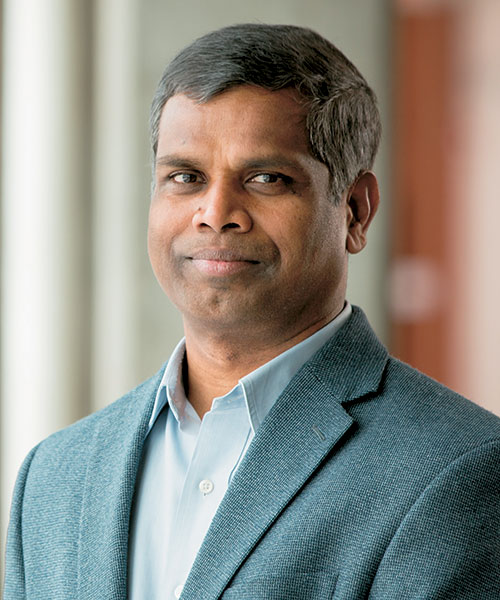 Cyber-physical testbed gives realistic platform for power grid security research
Cyber-physical testbed gives realistic platform for power grid security research
With the nation’s security and economic vitality in his sights, Manimaran Govindarasu is setting out to make the power grid infrastructure more resilient against evolving and continuous cyberattacks.
These attacks could result in anything from compromised data within utility companies to significant blackouts across the country.
“Our current power grid is designed to manage randomly occurring faults from things like devastating storms, but it doesn’t have the same capacity when it comes to malicious cyberattacks,” explains Govindarasu, Mehl Professor of Electrical and Computer Engineering.
Competing with these attacks and developing defensive and mitigative strategies requires a safe, realistic place to configure and simulate compromises to the grid. That environment is exactly what Govindarasu is creating with a cyber-physical security testbed.
The testbed, which integrates industry standard control software, communication protocols, and field devices combined with real-time power system simulators, provides an accurate representation of cyber-physical grid interdependencies.
Researchers, including faculty and graduate and undergraduate students, use the testbed to assess vulnerabilities and risks, analyze system impacts, and validate and evaluate countermeasures.
Govindarasu also incorporates the testbed into the coursework of a senior/graduate-level course on cybersecurity as well as in senior capstone design projects. Additionally, he offers the technology to outreach programs, giving people outside the university a chance for hands-on experience with power grid and cybersecurity.
“Not only are we studying the impact of these attacks, we are gaining insight into how to prevent them from happening in the first place,” Govindarasu says. “It’s a great opportunity for all those involved—the students get to learn technical skills, and their projects provide more data to incorporate into our research.”
The system he has created is unique on a university campus, but Govindarasu feels it’s the best place for such a technology.
“We are uniquely positioned at Iowa State because we have strong industry-university collaborative programs in information assurance and power engineering. Taken together, we can incorporate all these ideas in one place and really start doing something about the problem,” he says.
While the testbed is operational, Govindarasu is working on enhancing it by scaling it up, federating it with complementary testbeds and adding remote access capability. These advancements require creative solutions, but they would also allow for more partnerships to form within the project.
“Other universities and national labs want to be able to access the testbed to run different scenarios and collect results. We want to create a web interface that would allow for this work and also add to the functionality of the technology,” he says.
The testbed was first funded by a strategic research initiative within the electrical and computer engineering department. Later, the college added funds when the project showed promise. Now, it has support from the U.S. National Science Foundation and in-kind donations.
“It has taken some time to develop a full system that functions so well, and it has been a synergistic group effort with my colleagues Dr. Ajjarapu and Dr. Jacobson and our students,” Govindarasu says. “We definitely have more work and collaborating to do, but it’s exciting to be part of something that is so timely and can have such an important impact.”